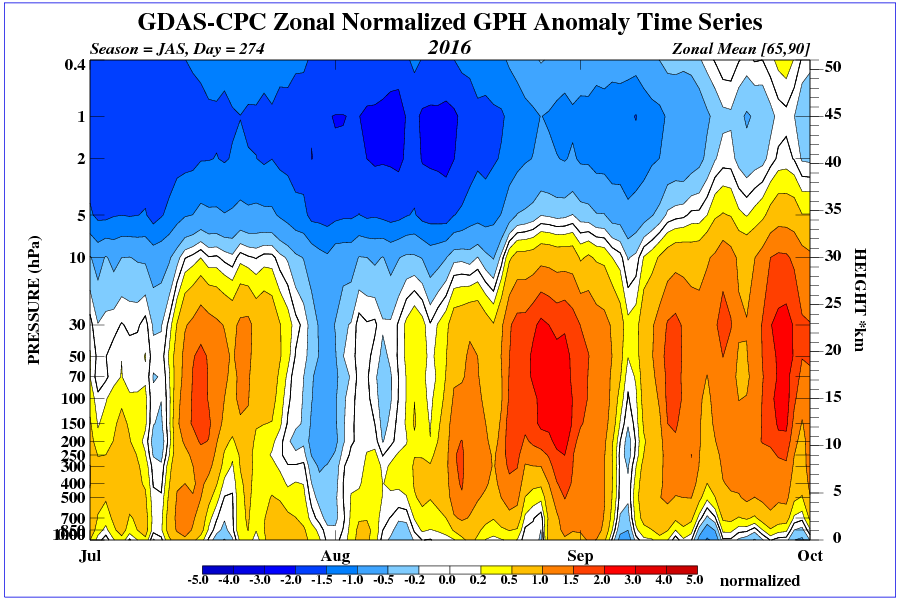Tim writes,
A new paper of considerable interest at the Talkshop…
Properties of sunspot cycles and hemispheric wings since the 19th century
Raisa Leussu, Ilya G. Usoskin, Rainer Arlt and Kalevi Mursula
http://dx.doi.org/10.1051/0004-6361/201628335
Open access with registration.
ABSTRACT
Aims. The latitudinal evolution of sunspot emergence over the course of the solar cycle, the so-called butterfly diagram, is a fundamental property of the solar dynamo. Here we present a study of the butterfly diagram of sunspot group occurrence for cycles 7–10 and 11–23 using data from a recently digitized sunspot drawings by Samuel Heinrich Schwabe in 1825–1867, and from RGO/USAF/NOAA(SOON) compilation of sunspot groups in 1874–2015.
Methods. We developed a new, robust method of hemispheric wing separation based on an analysis of long gaps in sunspot group occurrence in different latitude bands. The method makes it possible to ascribe each sunspot group to a certain wing (solar cycle and hemisphere), and separate the old and new cycle during their overlap. This allows for an improved study of solar cycles compared to the common way of separating the cycles.
Results. We separated each hemispheric wing of the butterfly diagram and analysed them with respect to the number of groups appearing in each wing, their lengths, hemispheric differences, and overlaps.
Conclusions. The overlaps of successive wings were found to be systematically longer in the northern hemisphere for cycles 7–10, but in the southern hemisphere for cycles 16–22. The occurrence of sunspot groups depicts a systematic long-term variation between the two hemispheres. During Schwabe time, the hemispheric asymmetry was north-dominated during cycle 9 and south-dominated during cycle 10.
Post by Tim







Good find Tim. It’s very interesting that cycle 12 looks no stronger than cycle 14.
The shape looks right for integration to temperature. I still think magnetics are the key, solar is asymmetric.
Tallbloke situation in the north becomes interesting. In the stratosphere we have a strong anomaly pressure.


Strong jumping GCR.
A very strong ionization of the lower stratosphere.
http://sol.spacenvironment.net/nairas/Dose_Rates.html
Timo Niroma takes a look at Jupiter’s perihelion (closest approach to the Sun):
‘…statistical measurements show that sunspots in average get more scarce when Jupiter nears the Sun. At the perihelion the smoothed value has never exceeded 100 Wolfs since we have the monthly values from 1749.’
http://personal.inet.fi/tiede/tilmari/sunspots.html#spreason
Jupiter reached perihelion on 5 May 1999.
http://www.astronomycafe.net/qadir/q47.html
then…
‘For two days in May, 1999, the solar wind that blows constantly from the Sun virtually disappeared — the most drastic and longest-lasting decrease ever observed.’
http://science.nasa.gov/science-news/science-at-nasa/1999/ast13dec99_1/
As noted by Timo Niroma (see ‘Special Later Addition’) here:
http://personal.inet.fi/tiede/tilmari/sunspots.html#may1999
—
Magnetic forces cancelling out?
NASA offers an animation [see NASA science link above]:
Right: Animation -The Day the Solar Wind Disappeared (Berry animation 9.4MB) As the solar wind dissipates on May 11, 1999, the magnetosphere and bow shock around Earth expand to five times their normal size. The aurora, which usually forms ovals around Earth’s poles, fills in over the northern polar cap. Credit: NASA [Quicktime movie]
NB: NASA don’t mention the Jupiter perihelion.
This is the pdf of the paper.
Click to access aa28335-16.pdf
Quote from the paper: ‘Pulkkinen et al. (1999) studied the
long-term variation in the position of the magnetic equator and
concluded that it has a variation in timescale of around 90 yrs.’
That could be half the ~179 year Jose cycle.
Possible aurora visible on long camera exposures tonight
http://aurorawatch.lancs.ac.uk/